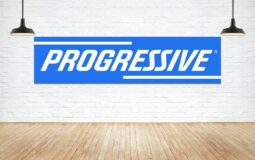As a business owner, protecting your enterprise against unforeseen risks and liabilities is paramount to its long-term success. Business insurance provides essential financial protection against various perils and hazards, safeguarding your assets, operations, and livelihood. However, the insurance needs of your business may evolve over time due to changes in your operations, industry trends, regulatory requirements, and other factors. Regularly reviewing and updating your business insurance policy is crucial for ensuring adequate coverage and mitigating potential gaps in protection. In this article, we’ll explore the importance of reviewing and updating your business insurance policy and provide guidance on how often to conduct these assessments.
- Changes in Business Operations:
One of the primary reasons to review and update your business insurance policy is changes in your business operations. As your business grows and evolves, you may introduce new products or services, expand into new markets, or change your business model. These changes can introduce new risks and liabilities that may not be adequately covered by your existing insurance policy. Conducting a thorough review of your insurance coverage allows you to assess whether your policy aligns with your current operations and identify any gaps in coverage that need to be addressed.
- Industry Trends and Best Practices:
The business landscape is constantly evolving, with new industry trends, emerging risks, and best practices shaping the way businesses operate. Staying abreast of industry developments is essential for ensuring that your business remains competitive and resilient in the face of changing dynamics. Reviewing your insurance policy allows you to stay informed about industry-specific risks and insurance solutions tailored to your sector. By updating your coverage to reflect current industry standards and best practices, you can proactively mitigate potential risks and liabilities.
- Regulatory Changes:
Regulatory requirements governing business operations and insurance coverage may change over time, necessitating updates to your insurance policy. Stay informed about relevant laws, regulations, and compliance standards that may impact your business. Ensure that your insurance policy meets any new legal requirements or obligations imposed by regulatory authorities in your industry. Failure to comply with regulatory changes may expose your business to fines, penalties, or legal consequences for non-compliance.
- Changes in Property Values and Assets:
The value of your business assets, including property, equipment, inventory, and intellectual property, may fluctuate over time due to changes in market conditions, inflation, or depreciation. Conduct periodic assessments of your business assets to ensure that your insurance coverage accurately reflects their current value. Adjust your policy limits and coverage accordingly to ensure that your assets are adequately protected against potential losses or damage.
- Reviewing Coverage Limits and Deductibles:
Reviewing your insurance coverage limits and deductibles is essential for ensuring that your policy provides adequate protection while managing costs effectively. Evaluate whether your current coverage limits are sufficient to cover potential losses and liabilities based on your business operations and risk exposure. Consider adjusting deductibles to align with your risk tolerance and financial capabilities. Balancing coverage limits and deductibles allows you to strike the right balance between protection and affordability.
- Changes in Risk Exposure:
Changes in your business operations, market conditions, or external factors may impact your risk exposure and insurance needs. Conduct a risk assessment to identify potential risks and vulnerabilities that may affect your business. Consider factors such as industry trends, economic conditions, geographic location, and competitive landscape when evaluating your risk exposure. Update your insurance policy to address any new or emerging risks that may impact your business’s viability and sustainability.
- Life Events and Business Milestones:
Life events and business milestones such as mergers, acquisitions, expansions, or changes in ownership structure can have significant implications for your insurance coverage. Review your insurance policy in conjunction with major business milestones to ensure that it aligns with your evolving needs and circumstances. Seek guidance from an experienced insurance advisor to navigate complex insurance issues associated with significant business changes and transitions.
Conclusion:
Regularly reviewing and updating your business insurance policy is essential for ensuring adequate protection against unforeseen risks and liabilities. Changes in your business operations, industry trends, regulatory requirements, property values, risk exposure, and other factors may necessitate updates to your insurance coverage to address evolving needs and mitigate potential gaps in protection. By conducting regular assessments of your insurance policy and making necessary adjustments, you can safeguard your business assets, operations, and livelihood against potential risks and uncertainties. Working with an experienced insurance advisor can provide valuable insights and guidance in navigating the complexities of business insurance and optimizing coverage to meet your specific needs and circumstances. With the right insurance coverage in place, you can have peace of mind knowing that your business is adequately protected against potential threats and vulnerabilities, allowing you to focus on achieving your goals and objectives with confidence.










